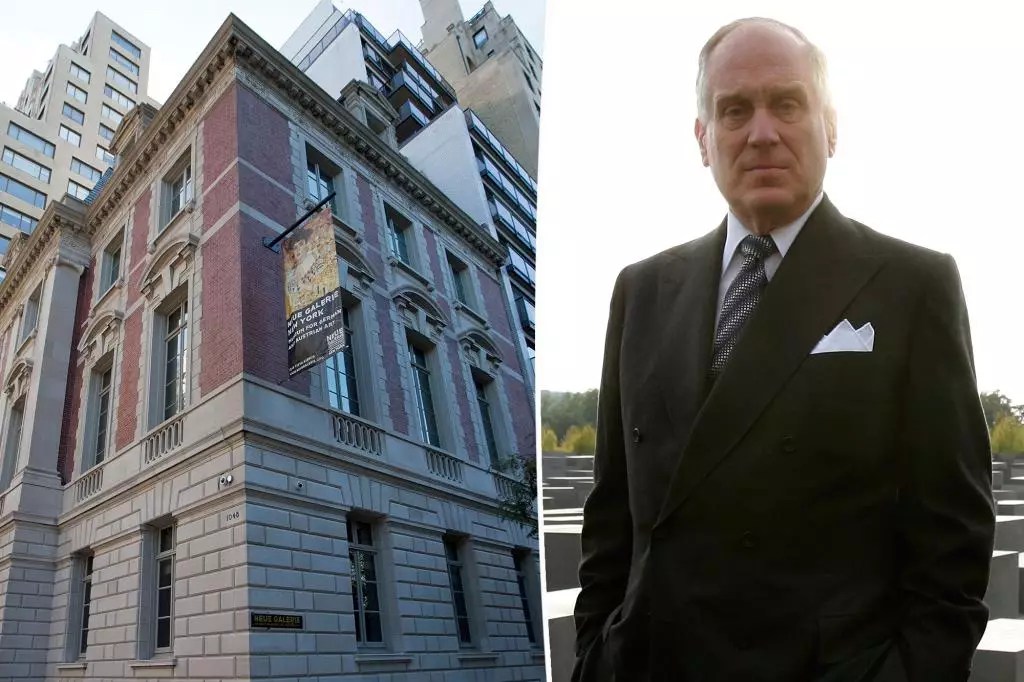The art world in New York City has recently been plagued by a wave of anti-Israel graffiti and vandalism. Numerous art galleries across the city have fallen victim to these attacks, yet there is a divisive response within the gallery owner community. While some choose to keep the incidents under wraps, others see the attacks as a clear manifestation of antisemitism and call for action. The targeted galleries range from small, independent establishments to esteemed institutions on Fifth Avenue. With messages quoting Palestinian death tolls and urging a boycott of Israeli artists, these attacks have left a lasting scar on the city’s art scene.
A major point of contention among gallery owners is whether to publicize the attacks or dismiss them as mere acts of nuisance. Some owners argue that publicizing the attacks would only provide the vandals with unwarranted attention and credibility. On the other hand, there are those who believe that silence would be hypocritical, as art is often seen as a medium for expression. They argue that repression of such incidents would contradict the very essence of artistic freedom. This debate further highlights the complexities surrounding these acts of vandalism and the gallery owners’ response to them.
One of the prominent galleries affected by the vandalism is Pace, an esteemed institution on Fifth Avenue. The gallery was specifically targeted due to its representation of Israeli artist Michal Rovner. Pace had showcased Rovner’s video work titled “Signals,” which called for the return of hostages taken by Hamas during the violent events of October 7th. The word “Intifada” was scrawled across the gallery walls in striking red letters, accompanied by other signs protesting the sale and collaboration with Zionists. The targeted attack on Pace Gallery reflects a clear attempt to undermine Israeli artwork and artists in the heart of New York’s art world.
While some galleries have chosen to openly condemn the attacks and seek support, others have opted for silence. Lévy Gorvy Dayan, an Upper East Side gallery, has previously voiced its dissent against an open letter supporting Palestine published by the Artforum. This stance drew criticism from parts of the art community, leading to internal controversies. In response to the recent attacks, the gallery refrained from making an official statement, sparking debates about their position and the moral obligations of gallery owners. Isaac Lyles, co-founder of Lyles and King on the Lower East Side, defended his silence, claiming support for the freedom of expression and opinion of the vandals, regardless of their message.
The prevailing debate within the art world exposes the divergent views on how to respond to these acts of vandalism. Some insiders argue that the lack of awareness among the general public and even within the art community itself is deeply troubling. They draw parallels to the historical “marking” of Jewish businesses in Germany before the Holocaust, suggesting that these attacks are indicative of a similar trend. These individuals stress the need for vigilance and action against hate-fueled vandalism. In contrast, there are those who view the attacks as unrelated to the gallery owners’ political standpoints. Instead, they perceive the incidents as opportunistic acts, taking advantage of the prominence of galleries and events.
Despite the differing responses, gallery owners affected by the attacks have come together in solidarity. The incident has united the galleries, with owners offering support and assistance to one another in cleaning the graffiti and repairing the damage. This unexpected unity showcases the resilience of the art community and its determination not to let these acts of vandalism hinder their creative endeavors. The collective effort in overcoming the aftermath of these attacks has become a symbol of strength in the face of adversity.
The recent spate of anti-Israel graffiti and vandalism in New York City’s art galleries has exposed a deep divide within the art world. Gallery owners grapple with whether to publicize the attacks or dismiss them as inconsequential acts. These divergent perspectives have led to internal debates and controversies within the art community. Nevertheless, the attacks have united the affected galleries, emphasizing their collective resilience and determination to overcome hate-fueled acts. As the art world continues to navigate these challenges, it is a reminder of the power of unity and the need to confront prejudice and discrimination in all its forms.


Leave a Reply